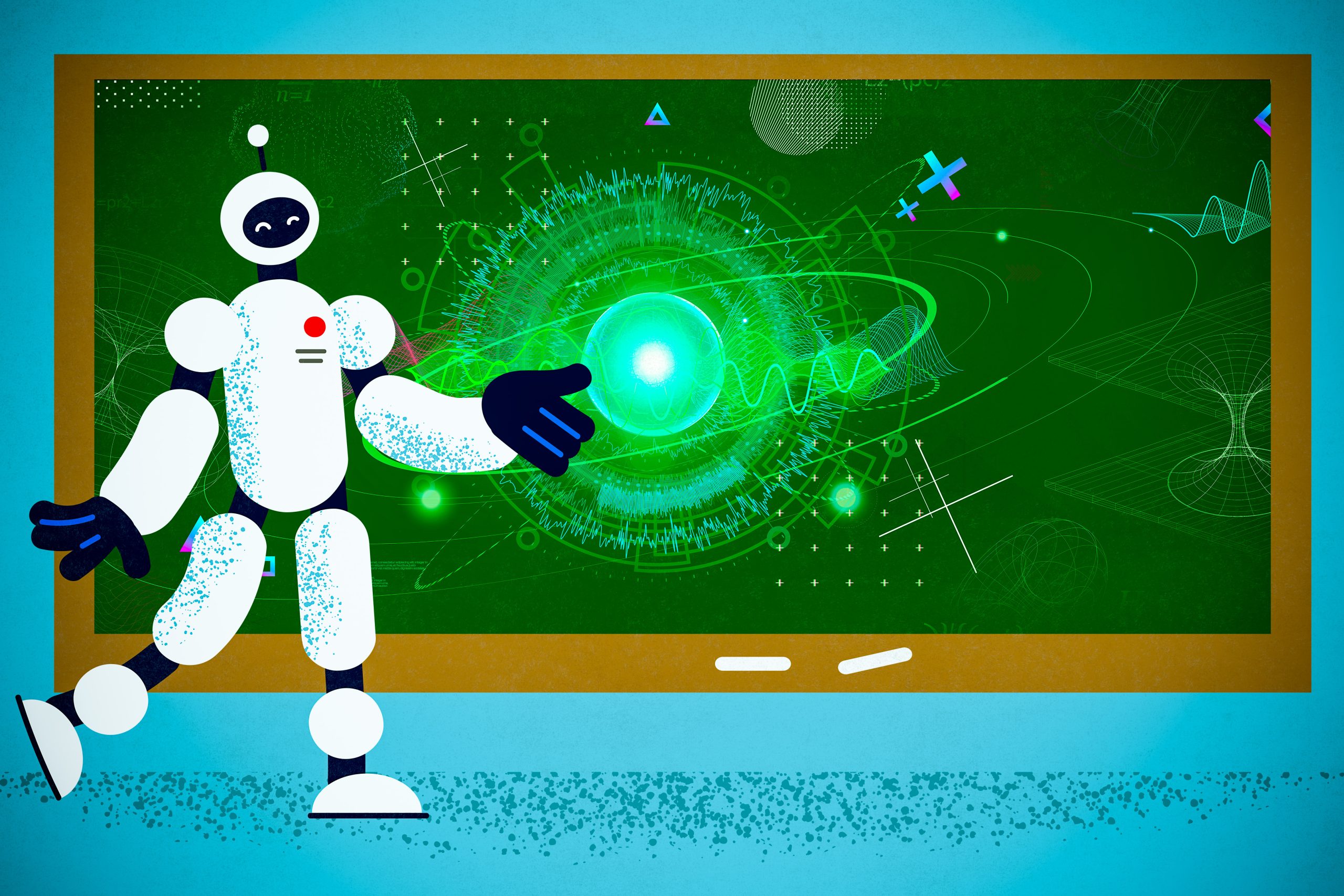When aqua freezes, it transitions from a liquid section to a cast section, to bring about a drastic alternate in houses like density and quantity. Section transitions in aqua are so familiar maximum folks most likely don’t even consider them, however section transitions in album fabrics or complicated bodily techniques are an remarkable branch of research.
To completely perceive those techniques, scientists will have to have the ability to acknowledge stages and locate the transitions between. However the best way to quantify section adjustments in an unknown device is steadily vague, particularly when knowledge are scarce.
Researchers from MIT and the College of Basel in Switzerland implemented generative synthetic perception fashions to this infection, growing a untouched machine-learning framework that may mechanically map out section diagrams for album bodily techniques.
Their physics-informed machine-learning means is extra environment friendly than arduous, handbook tactics which depend on theoretical experience. Importantly, as a result of their means leverages generative fashions, it does now not require plenty, classified coaching datasets old in alternative machine-learning tactics.
One of these framework may aid scientists examine the thermodynamic houses of album fabrics or locate entanglement in quantum techniques, for example. In the long run, this system may build it conceivable for scientists to find unknown stages of subject autonomously.
“If you have a new system with fully unknown properties, how would you choose which observable quantity to study? The hope, at least with data-driven tools, is that you could scan large new systems in an automated way, and it will point you to important changes in the system. This might be a tool in the pipeline of automated scientific discovery of new, exotic properties of phases,” says Frank Schäfer, a postdoc within the Julia Lab within the Pc Science and Synthetic Prudence Laboratory (CSAIL) and co-author of a paper in this means.
Becoming a member of Schäfer at the paper are first writer Julian Arnold, a graduate scholar on the College of Basel; Alan Edelman, implemented arithmetic teacher within the Segment of Arithmetic and chief of the Julia Lab; and senior writer Christoph Bruder, teacher within the Segment of Physics on the College of Basel. The analysis is published today in Bodily Assessment Letters.
Detecting section transitions the usage of AI
Moment aqua transitioning to ice could be a few of the maximum not hidden examples of a section alternate, extra unique section adjustments, like when a subject material transitions from being an ordinary conductor to a superconductor, are of prepared pastime to scientists.
Those transitions can also be detected via figuring out an “order parameter,” a accumulation this is remarkable and anticipated to switch. As an example, aqua freezes and transitions to a cast section (ice) when its temperature drops under 0 levels Celsius. On this case, an acceptable layout parameter may well be outlined on the subject of the percentage of aqua molecules which might be a part of the crystalline lattice as opposed to those who stay in a disordered climate.
Within the presen, researchers have trusted physics experience to assemble section diagrams manually, drawing on theoretical working out to grasp which layout parameters are remarkable. No longer handiest is that this tedious for complicated techniques, and in all probability inconceivable for unknown techniques with untouched behaviors, however it additionally introduces human favor into the answer.
Extra not too long ago, researchers have begun the usage of mechanical device studying to assemble discriminative classifiers that may clear up this activity via studying to categorise a size statistic as coming from a selected section of the bodily device, the similar manner such fashions classify a picture as a cat or canine.
The MIT researchers demonstrated how generative fashions can also be old to unravel this classification activity a lot more successfully, and in a physics-informed means.
The Julia Programming Language, a common language for clinical computing that also is old in MIT’s introductory unbending algebra categories, offer many equipment that build it useful for developing such generative fashions, Schäfer provides.
Generative fashions, like those who underlie ChatGPT and Dall-E, generally paintings via estimating the anticipation distribution of a few knowledge, which they usefulness to generate untouched knowledge issues that have compatibility the distribution (equivalent to untouched cat pictures which might be alike to current cat pictures).
On the other hand, when simulations of a bodily device the usage of tried-and-true clinical tactics are to be had, researchers get a type of its anticipation distribution for separate. This distribution describes the size statistics of the bodily device.
A extra a professional type
The MIT workforce’s perception is this anticipation distribution additionally defines a generative type upon which a classifier can also be built. They plug the generative type into same old statistical formulation to without delay put together a classifier rather of studying it from samples, as was once performed with discriminative approaches.
“This is a really nice way of incorporating something you know about your physical system deep inside your machine-learning scheme. It goes far beyond just performing feature engineering on your data samples or simple inductive biases,” Schäfer says.
This generative classifier can decide what section the device is in given some parameter, like temperature or force. And as the researchers without delay approximate the anticipation distributions underlying measurements from the bodily device, the classifier has device wisdom.
This permits their mode to accomplish higher than alternative machine-learning tactics. And since it will possibly paintings mechanically with out the desire for in depth coaching, their means considerably complements the computational potency of figuring out section transitions.
On the finish of the past, alike to how one would possibly ask ChatGPT to unravel a math infection, the researchers can ask the generative classifier questions like “does this sample belong to phase I or phase II?” or “was this sample generated at high temperature or low temperature?”
Scientists may additionally usefulness this technique to clear up other binary classification duties in bodily techniques, in all probability to locate entanglement in quantum techniques (Is the climate entangled or now not?) or decide whether or not concept A or B is most fitted to unravel a selected infection. They might additionally usefulness this technique to higher perceive and give a boost to massive language fashions like ChatGPT via figuring out how sure parameters will have to be tuned so the chatbot provides the most efficient outputs.
Going forward, the researchers additionally need to learn about theoretical promises relating to what number of measurements they might wish to successfully locate section transitions and estimate the quantity of computation that will require.
This paintings was once funded, partly, via the Swiss Nationwide Science Base, the MIT-Switzerland Lockheed Martin Seed Capitaltreasury, and MIT Global Science and Generation Tasks.




